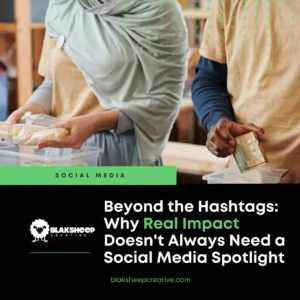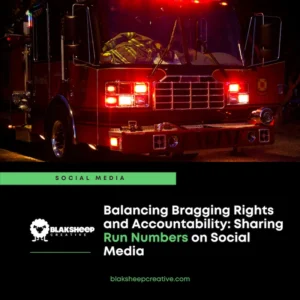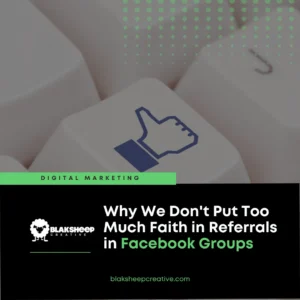Busting the Myths of Social Media Mania
The digital age has ushered in a universe where social media often takes center stage. Numerous businesses consider it a vital instrument for brand exposure and customer engagement. But is it genuinely a one-size-fits-all solution? Let’s explore this while also debunking some common misconceptions.
Determining the Right Audience-Platform Fit
Counterpoint: “Everyone, regardless of age, uses social media!”
While it’s undeniable that social media has permeated all age groups, the distribution across different platforms varies. To maximize the effectiveness of marketing strategies, it’s crucial to pinpoint where your audience primarily resides.

Deciphering Demographics Across Platforms
- Youth-Centric Platforms: Platforms like TikTok and Snapchat have seen surges among younger audiences.
- Preferred by Gen Z and younger millennials
- Driven by short-form content and visual storytelling
- High levels of daily engagement
- Mid-Range Platforms: Platforms like Instagram and Twitter appeal to a broader age group, from teens to middle-aged individuals.
- Diverse content formats: photos, stories, videos, and text
- Used for both personal connections and professional networking
- Opportunities for influencer partnerships and brand collaborations
- Mature Platforms: LinkedIn and Facebook attract a more mature demographic.
- Business-centric discussions and networking dominate LinkedIn
- Facebook’s diverse tools (Pages, Groups) cater to varied interests, from personal to professional
- Longer content formats with detailed discussions and shared articles
Tailoring Content to Platform Nuances
Once the primary platform of your audience is identified, the next step is crafting content that resonates.
- Content Format: From stories to reels, tweets to posts—each platform has its unique content formats.
- Know the trending formats and best practices for each
- Ensure content aligns with platform-specific algorithms and user behaviors
- Engagement Strategies: Every platform offers distinct methods of engagement.
- Polls, Q&As, and challenges on Instagram
- LinkedIn articles for thought leadership
- Facebook Group discussions and live sessions
- Analyze and Iterate: Regularly review analytics to measure success and tweak strategies.
- Determine which content formats and posts resonate most
- Identify the best times to post based on audience activity
- Adjust strategy based on insights and feedback
In sum, while social media is pervasive, its utilization varies widely among demographics. For brands to optimize their marketing efforts, understanding this audience-platform fit is paramount. It’s not just about being present everywhere but about being impactful where it matters most.
Investment: Time, Finances, and Human Capital
Counterpoint: “Automation tools simplify social media management!”
With the rise of technology, automation tools have made it easier for businesses to manage their social media presence. However, simplification doesn’t mean it requires less investment in terms of time, finances, and human resources. Furthermore, while automation brings efficiency, the human touch is irreplaceable for authentic brand experiences.
Understanding the Costs of Social Media Management
- Time Investment:
- Content Creation: Crafting quality content requires research, imagination, and design.
- Audience Engagement: Responding to comments, direct messages, and feedback.
- Analytics & Reporting: Regularly reviewing metrics to gauge performance and guide future strategies.
- Financial Outlay:
- Paid Promotions: Budget allocation for sponsored posts or ads to reach a broader audience.
- Tool Subscriptions: Costs associated with premium features of management and automation tools.
- Collaborations & Partnerships: Expenses tied to influencer partnerships or other brand collaborations.
- Human Capital:
- Dedicated Teams: Hiring or allocating staff specifically for social media roles.
- Continuous Training: Ensuring the team is updated with platform changes, emerging trends, and new tools.
- Overhead Costs: Additional resources like workspace, software licenses, and more.
Evaluating Automation vs. Human Engagement
- Pros of Automation:
- Streamlining repetitive tasks, such as posting schedules.
- Gathering analytics and insights efficiently.
- Efficiently managing multiple platform presences.
- Cons of Over-Reliance on Automation:
- Risk of impersonal or mismatched interactions.
- Missed opportunities for real-time engagement.
- Potential for tech glitches, leading to miscommunication or missed postings.
- Human Engagement Necessities:
- Personalized interactions build trust and brand loyalty.
- Real-time responsiveness to feedback or issues.
- Adaptability to shifts in social media mood or trending topics.
Weighing Investment for Startups & Small Businesses
- Resource Limitations: Limited budget and staff may restrict the extent of social media efforts.
- Focused Strategy: It’s crucial to identify a singular platform or strategy that aligns most with the business’s target audience.
- ROI Consideration: Assessing if the return on investment—whether in increased sales, brand visibility, or customer loyalty—is worth the resources funneled into social media.
In essence, while automation tools ease managing social media, businesses must gauge their investments holistically. It’s about striking the right balance between technological efficiency and authentic human interaction to ensure meaningful engagement and a worthy return on investment.
To learn more about the importance of brand consistency and how to maintain it, read our recent article, “Why Consistent Branding Is Key to a Successful Business.”
ROI: The Hazy Picture
Counterpoint: “Social media enhances brand visibility!”
There’s no doubt that social media can amplify a brand’s presence. However, visibility isn’t the end goal—it’s merely a means to an end. The real objective? Conversion and loyalty. While social media can boast vast reaches and high engagement rates, understanding how these metrics impact the bottom line is vital.
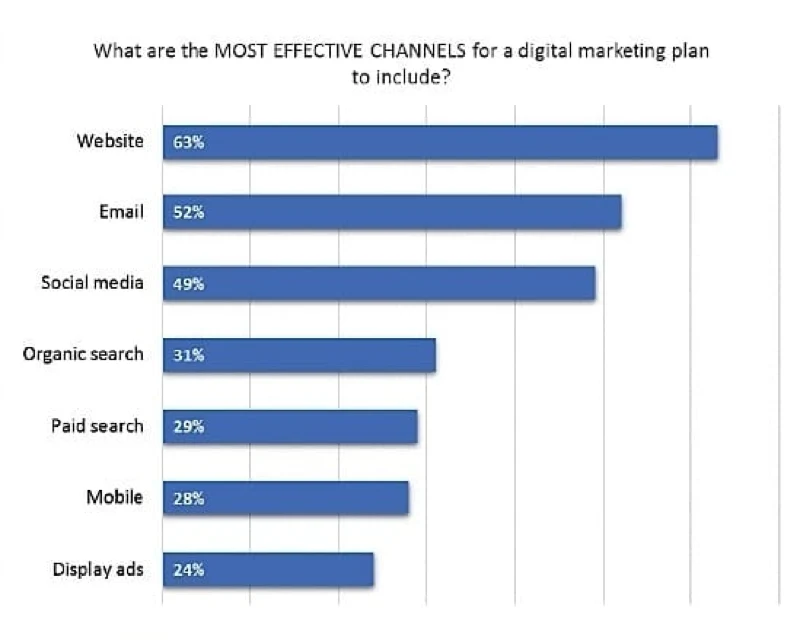
Visibility vs. Conversion
- The Lure of Likes & Shares:
- High engagement statistics can be intoxicating.
- Likes, shares, and retweets offer a dopamine hit but don’t always correlate with sales or meaningful interactions.
- Conversion Metrics:
- Website Traffic: Are social media efforts driving traffic to the main website or landing page?
- Lead Generation: How many users move beyond passive engagement to sign-ups or inquiries?
- Sales Funnel Progression: Are users advancing through the sales funnel, from awareness to purchase?
- Customer Retention:
- Not just about acquiring new customers but retaining existing ones.
- Does social media engagement lead to repeat purchases or brand loyalty?
The Deceptive Nature of Vanity Metrics
- Instant Gratification: High numbers give an immediate sense of success.
- Surface-Level Analysis: Likes and followers are easy to measure but might not provide depth.
- Lack of Actionable Insights: High engagement doesn’t necessarily provide direction for future strategies or improvements.
Don’t get wrapped up in vanity metrics. Read our recent article to learn the dangers of relying on them alone.
Delving Deeper into ROI Metrics
- Customer Lifetime Value (CLV):
- Measure the net profit from a customer over the entirety of their relationship with the brand.
- Does increased social media engagement impact CLV?
- Customer Acquisition Cost (CAC):
- The cost to acquire a customer via social media campaigns.
- Balanced against CLV to ensure profitability.
- Net Promoter Score (NPS):
- Gauges customer loyalty and satisfaction.
- Can social media strategies influence NPS positively?
- Sales Conversion Rates:
- The percentage of social media leads that result in sales.
- Helps identify if efforts are targeting the right audience with the right message.
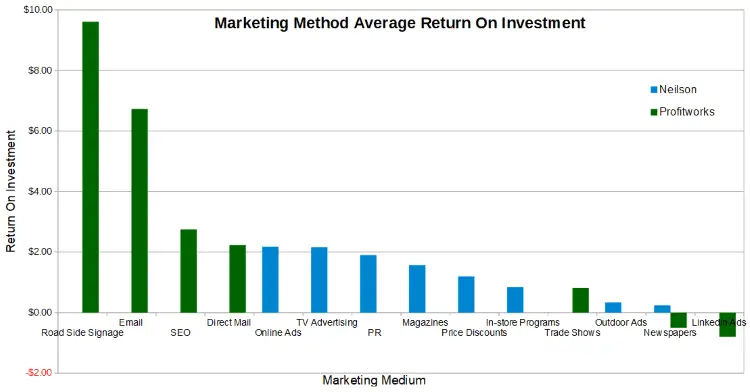
The Broader Picture
- Branding and Recall: Even if immediate sales don’t materialize, does the audience remember the brand in the future?
- Community Building: Beyond sales, is a community forming around the brand?
- Long-Term vs. Short-Term Impact: Some social media strategies might have longer gestation periods before showing tangible results.
The Peril of Negative Publicity
In conclusion, while social media is a potent tool for brand amplification, the real challenge lies in translating this visibility into tangible business outcomes. It’s not merely about counting likes but about making every like count. To truly grasp the ROI of social media efforts, brands must look beyond the surface and dive deep into what these metrics mean in the larger scheme of things.
Counterpoint: “All publicity is beneficial!”
The age-old adage suggests there’s no such thing as bad publicity. But in the age of social media, where sentiments can spread like wildfire, the negative repercussions can outweigh the potential benefits. Brands today must navigate the turbulent waters of public opinion with caution and tact.
The Double-Edged Sword of Virality
- Speed of Spread:
- Social media allows news to be disseminated rapidly.
- A single tweet or post can reach millions in hours or even minutes.
- Permanent Digital Footprint:
- Once it’s online, it’s almost impossible to erase completely.
- Archived versions, screenshots, and shares keep the story alive.
- Public Court of Opinion:
- Everyone becomes a judge, and public sentiment can quickly turn.
- Brands often have little time to react before narratives are set in stone.
Impact on Brand Trust and Loyalty
- Immediate Distrust:
- Negative publicity can cause instant skepticism among potential customers.
- Current customers may second-guess their association with the brand.
- Long-Term Perception:
- Even if a brand recovers, the stain of negative publicity can linger.
- Future interactions may be tinted by past incidents.
- Customer Churn:
- Existing customers might dissociate from the brand to avoid backlash or due to altered brand perception.
Financial Implications
- Immediate Revenue Hit:
- Customers might cancel orders or services.
- Potential customers might choose competitors.
- Stock Market Reaction (for public companies):
- Negative publicity can lead to stock prices taking a hit.
- Investors might lose confidence in company management.
- Increased PR and Damage Control Costs:
- Resources are diverted to manage the situation.
- The brand might engage in expensive campaigns to rebuild its image.
Vulnerability of Smaller Brands
- Lack of Resources:
- Smaller businesses may not have the funds or manpower for extensive damage control.
- Recovery might be slower, leading to a prolonged negative impact.
- Higher Stakes:
- A single incident can define a smaller brand, unlike larger corporations that have diverse portfolios to balance out negative attention.
- A smaller customer base means a higher percentage might be affected.
In conclusion, while some brands might turn negative attention into a positive spin, the potential damage often outweighs the benefits. Especially in today’s digital age, where speed and permanence merge, brands need to be proactive in their approach, valuing customer relationships and ensuring that they operate transparently and authentically to mitigate risks.
Before we dive into brand voice. It’s quite possible that you haven’t really looked at yours lately. Here’s a recent session from Liza Dunning from Airbnb, where she discusses the steps to developing your brand voice. It’s a must-watch!
Balancing Brand Voice with Platform Culture
Counterpoint: “Adjusting to platform culture demonstrates adaptability!”
Adaptability is undeniably an asset in today’s rapidly changing digital landscape. However, blindly adjusting to fit into every platform may prevent a brand from losing its distinctive voice and authenticity.
This balancing act is well-illustrated in the world of Snapchat for B2B marketing. A recent article by Strike Social emphasizes the potential of Snapchat as a unique tool for storytelling and relationship-building, especially for B2B firms.
To learn more about finding your brand’s voice, be sure to read the article “Five Easy Steps to Finding Your Brand’s Voice“.
Snapchat’s B2B Potential: Crafting Authentic Brand Stories in a Snap-Driven World
While Snapchat might seem initially out of place for B2B, its storytelling power can be harnessed effectively by brands. For instance, VaynerMedia brilliantly merged its brand narrative with Snapchat’s ephemeral format, providing behind-the-scenes insights into company life. This not only preserves brand authenticity but also resonates with Snapchat’s dynamic and engaging tone.
Yet, it’s essential for businesses venturing into such platforms to stay rooted in their core brand identity. Adapting to a platform’s culture shouldn’t equate to a total reinvention but rather a nuanced alignment that caters to the platform’s audience while staying true to the brand’s essence.

Maintaining a Genuine Brand Identity
Counterpoint: “Content creation agencies can uphold our online image!”
While content creation agencies can indeed be a valuable asset in generating online content, it’s essential to remember that they might not fully grasp a company’s ethos. This disconnect could lead to producing content that doesn’t truly align with the core brand identity.
To maintain an authentic brand image, especially during challenging times, brands need to be visible and heard and, sometimes, return to their roots.
Consistency is key when making any changes to the brand. Any change made should be consistent throughout all brand materials and channels.
Furthermore, maintaining brand consistency involves being persistent in several categories. It’s the combination of these categories that forms the brand’s overall identity.
In addition, brands should focus on their target audience and develop a unique selling proposition as part of their brand identity.
As a brand manager, cultivating the brand’s identity, maintaining a positive image, and telling the brand’s story in a unique yet authentic way is critical.
Finally, being adaptable and authentic are also essential aspects of keeping a brand identity strong.
Thus, while outsourcing content creation can be a helpful tool, the brand’s core values and identity must be preserved. Each brand has a unique story to tell, and ensuring that this story is portrayed accurately and consistently is critical to maintaining a genuine brand identity.
The Power of Personal Customer Interaction
Counterpoint: “Digital is the future! Who needs face-to-face?”
In our increasingly digital world, it’s tempting to rely solely on online means for customer interactions. However, the value of traditional, face-to-face interaction remains unparalleled.
Benefits of Personal Interactions
- Human Connection: Direct conversations create a bond that’s difficult to emulate digitally.
- Emotional resonance
- Personalized responses
- Reading body language and non-verbal cues
- Building Trust: Face-to-face interactions foster a sense of trust more swiftly than virtual exchanges.
- Immediate feedback
- Ensuring clarity and understanding
- Addressing concerns directly
- Closing Deals: In-person meetings can be more persuasive and decisive in making business deals.
- Tailored pitches
- Instant negotiations
- Building long-term partnerships
Research from Alicea Lieberman and Juliana Schroeder underlines how these personal interactions can offer depth and authenticity, which are often missing in virtual communications. Hence, while digital mediums are crucial, they should complement, not replace, personal customer interactions.
Decoding the Algorithm Conundrum
Counterpoint: “Keeping up with algorithms keeps us current!”
The digital landscape is ever-evolving, with algorithms updating almost incessantly. While it’s essential to adapt, it’s equally crucial to understand the implications of constant changes.
The Risks of Over-Reliance on Algorithms
- Reactive Approach: Constantly adjusting strategies to cater to new algorithms can lead to a reactive, rather than proactive, approach to content.
- Short-term tactics over long-term strategy
- Sporadic messaging
- Diluted Engagement: Instead of fostering genuine interactions, brands might focus solely on metrics that appease the algorithm.
- Quantity over quality of content
- Misaligned audience targeting
- Burnout: The relentless chase to understand and optimize for every algorithm change can strain resources.
- Overburdened teams
- Diminishing returns on effort
The Harvard Business Review suggests that while it’s vital to stay updated with digital shifts, it’s equally important to maintain a focus on authentic audience engagement. The ultimate goal is genuine connections, not merely playing to the tune of ever-changing algorithms.
The Final Verdict
Social media wields significant power. However, it’s essential to evaluate its relevance for a specific business model. Weighing its benefits against potential drawbacks ensures a balanced approach. In marketing, as in life, appreciating subtleties can make a world of difference.
Unlock Your Brand’s Potential with BlakSheep Creative! Explore our digital marketing services now or fill out the form for a no-obligation consultation.
